
Porsche Taycan Sport Turismo GTS Review

Introduction
There’s plenty of resistance to electrifying sports cars, so Porsche’s first electric model had to be pretty good, or the manufacturer would be (rightly) mocked for making a half-assed effort. Happily, the Taycan - first unveiled in 2019 - proved to be spectacularly good, although few wouldn’t argue that it needed to be a little more practical.
This brings us to the Taycan Sport Turismo. A Taycan on growth hormones, sharing the same wheelbase and body length as the regular sports saloon but extending the roof to create something that sits between a hatchback and an estate model.
And it does that, Porsche says, without compromising performance. We fire up the Taycan — well, switch it on — and find out if that’s true.
Select's rating score* - 4.5 / 5
At a Glance
The sensible, grown-up sibling to the Taycan, the Sport Turismo takes everything the well-received all-electric Taycan offers and builds on it with more space and practicality.
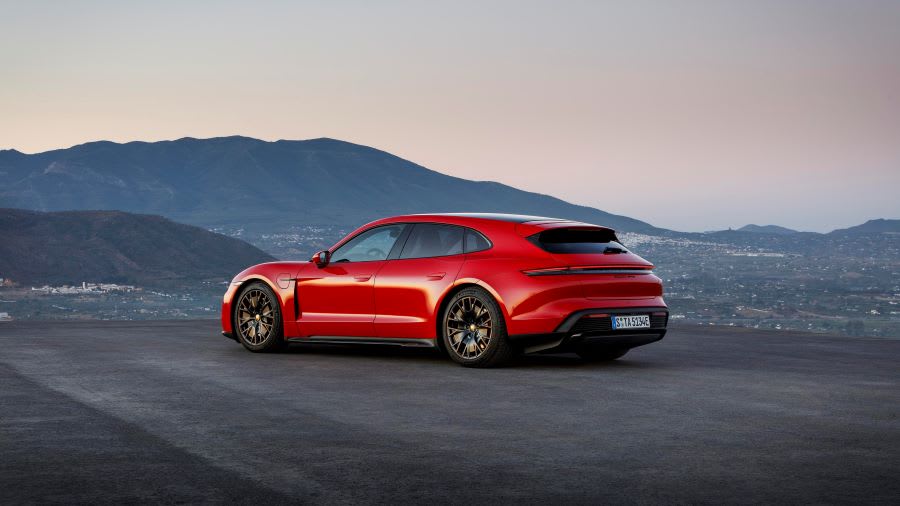
From the front, you’ll not be able to tell the difference between a regular Taycan saloon and a Sport Turismo model. It all changes as you move back along the heavily sculpted sides, where you’ll notice that the roof doesn’t swoop down in a coupe-like form. Instead, it stays high, extending the cabin and creating a more spacious model.
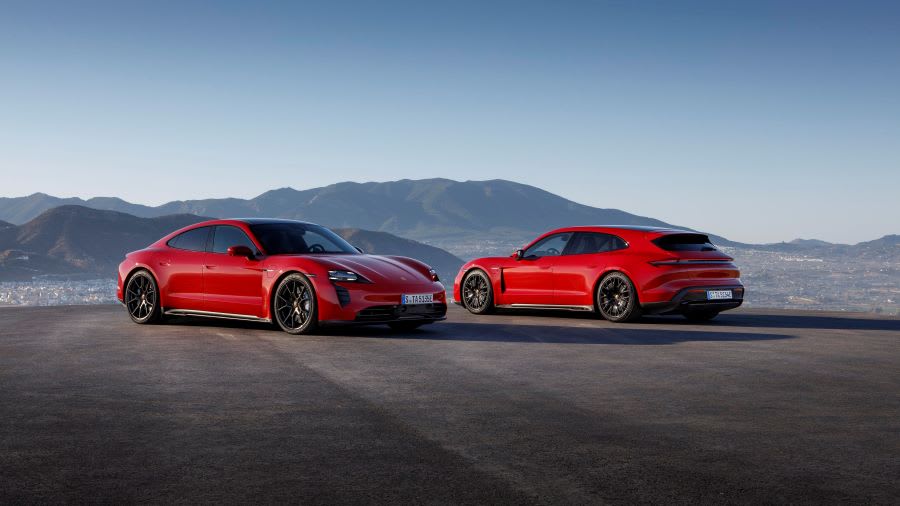
It shouldn’t be short on space, as the Taycan Sport Turismo is only a couple of centimetres shy of five metres long, but it’s got to hide a huge battery pack and a set of electric motors in there somewhere.
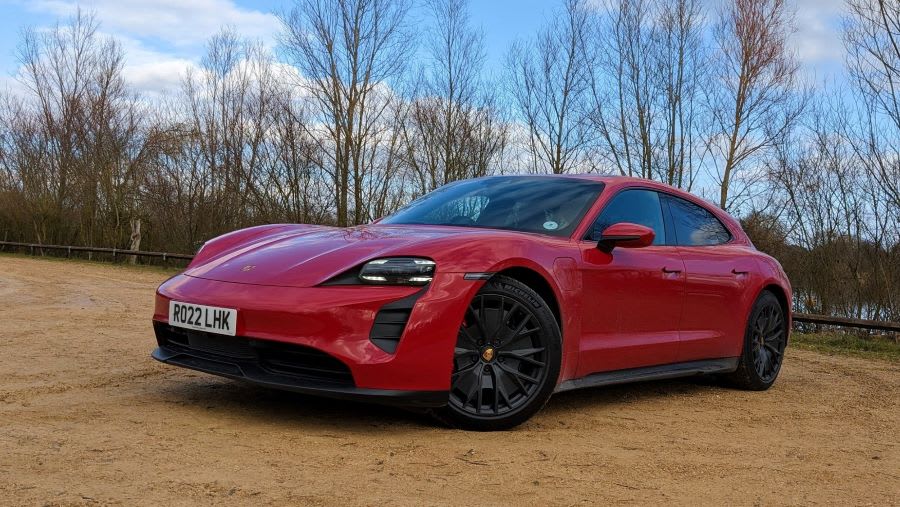
The range starts with the entry-level (and unnamed) Taycan Sport Turismo model at £76,500, with 408hp and a 0-62mph time of just 5.4 seconds. The 4S knocks the sprint time to 4.0 seconds, thanks to the 530hp available. The Turbo model hits 680hp and 3.2 seconds, with the £143,400 Turbo S providing a ludicrous 762hp and taking the sprint to 2.8 seconds.
In the middle sits our test model, the GTS, a vehicle that, on paper, feels like it has been carefully produced to offer the best balance between price and power. With 598hp and a sticker reading £107,000, the number stack up, at least.
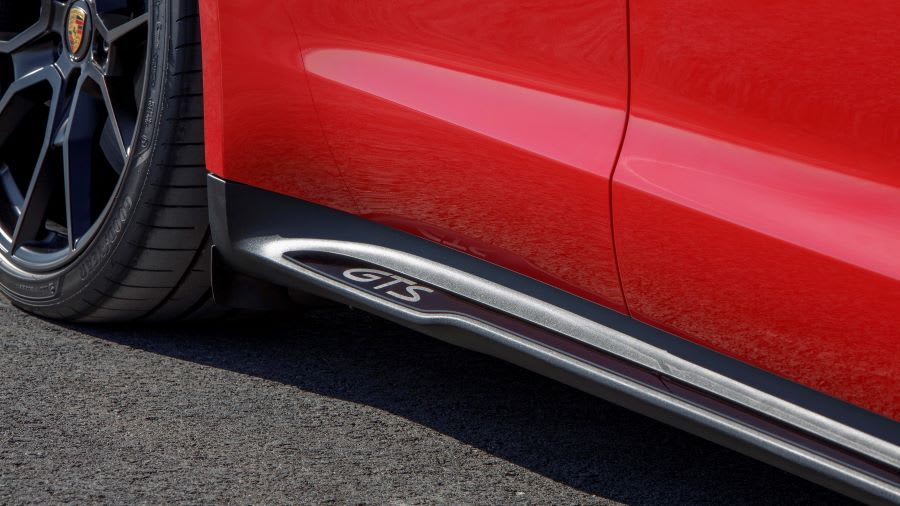
Key Features
One talking point of the Porsche Taycan Sport Turismo is something we cover at length in the Options section below, and that’s, er, the options. I won’t repeat the sensible comments about wise investments in useful extras or which bits of kit to avoid.
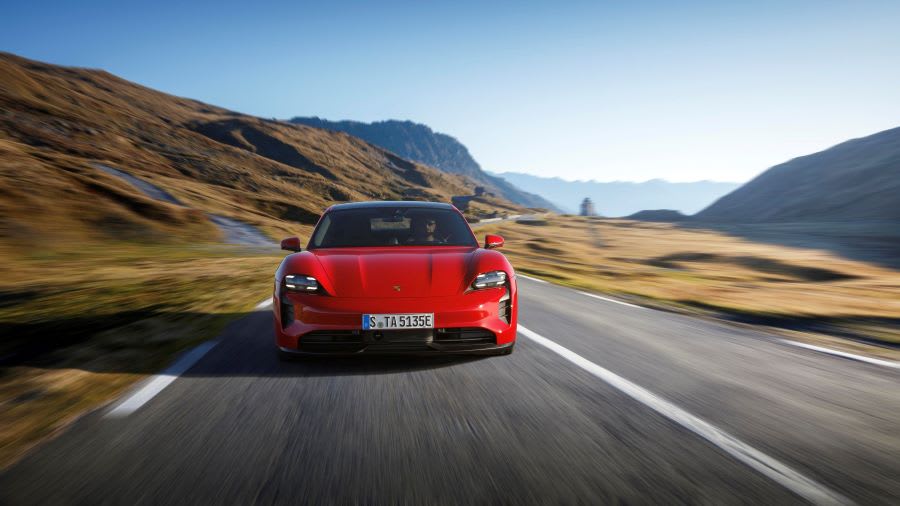
Instead, it’s worth spending some time perusing the list to see if you can make a Taycan specific to you. Spend enough time, and it’s feasible that you’ll end up with a specification that, literally, nobody else has.
That’s because virtually everything is customisable, from the obvious things like colours and wheels to barely visible changes, such as a gloss black cover for the rear wiper blade mounting. You can have the rear badges removed or painted black. There’s chrome to bolt on, or not. Want a different rear diffuser? No problem, just tick the box. You can even have the Porsche logo at the back of the car glow at night. Nice.

And then you get to the countless interior options, from 19 different basic colour schemes to stitching options and even personalised floor mats.
You can even pick the colour of the key and choose the colour of both the leather and the stitching of the key holder.
It’s a wonder that Porsche can produce such a wide variance of the basic car, but then it does charge handsomely for it.
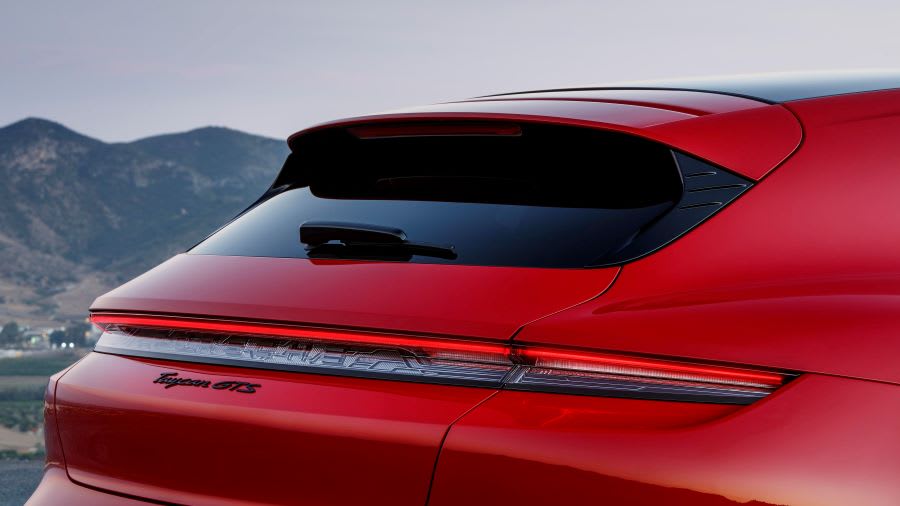
Performance & Drive
A freezing cold February is probably not the best time to try and extract all of the performance available from the Taycan GTS Sport Turismo, but the Porsche does its best to keep you on the straight and narrow.
There’s four-wheel-drive for added security and 21-inch alloys shod in wide Michelin Pilot Sport 4 tyres to keep the power on the road. Impressive software systems spread the 598hp around to find every last bit of grip, launching the car forwards with supercar-rivalling alacrity. It’s ferociously quick off the line but eminently controllable, and that’s without using the launch control system.
Use all of the systems, and it’ll rocket to 62mph in just 3.7 seconds and go on to 155mph. Few electric cars reach those heady heights, as the motor would end up spinning too quickly, so Porsche has equipped the Taycan with a two-speed rear axle. There’s no gear shifting required by the driver, though, so you can concentrate on pointing in the right direction.
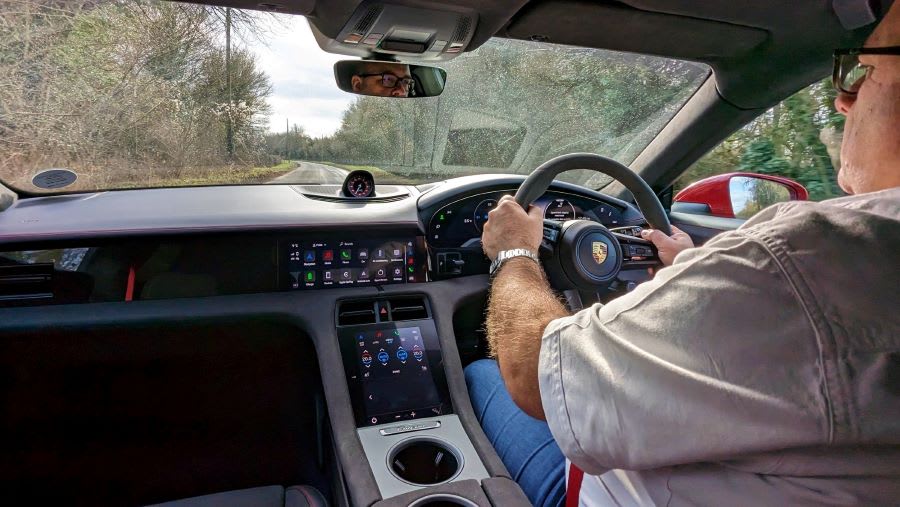
When you use the Sport Plus mode, the Taycan unlocks all 598hp and 850Nm of torque, delivered via all four wheels to the road. Under normal circumstances, the car lets you use just 517hp, but that’s still enough for near-instant performance.
The extra metal added to the Taycan to create the Sport Turismo weighs 90kg, but that doesn’t make much difference to the car or its handling — the car weighs 2,310kg, so that little extra is neither here nor there.
It doesn’t seemingly affect the handling, either, probably due to the low-slung batteries that keep the centre of gravity close to the ground. The steering is heavy, but in a good way — there’s enough feel from the front wheels to know what’s going on without the wheel being tugged around.
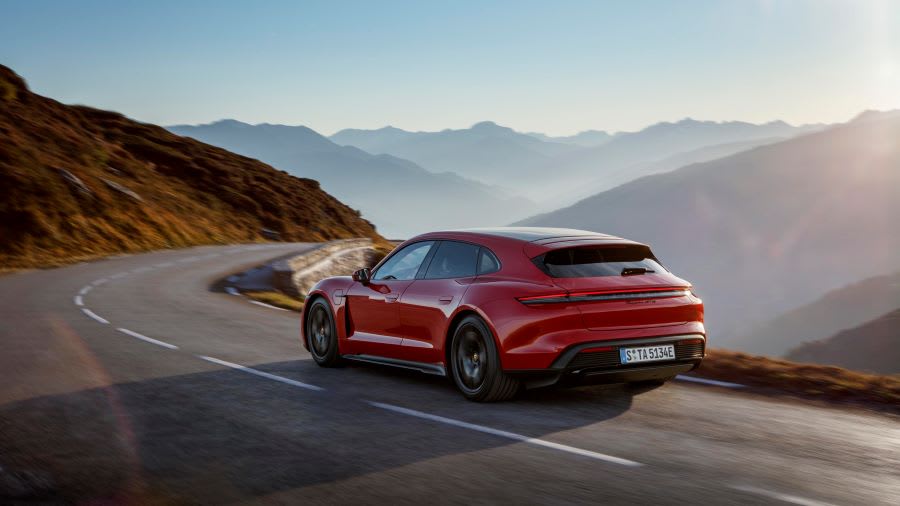
Grip levels are very high, as you’d expect, although there are occasions when the Taycan feels its size. At 2.1 metres wide, it can be tricky to place accurately in some situations, but the raised wheel arches ahead help you guide the car to any apex. Finding the edge of adhesion is, frankly, something you won’t manage on public roads, even in adverse conditions.
Different suspension modes switch from firm to less firm, with one extreme hardening responses. The other end of the scale softens the car enough to make it almost relaxing on a motorway drive. Actually, that undersells it. It’s one of the finest riding sportscars we’ve experienced, bettering anything from Aston Martin, BMW or Tesla. As much as we might like to be hurtling around entertaining roads, we all spend most of our time in traffic or on motorways — and frequently both simultaneously — so it’s a far more important aspect of the car than you might think.
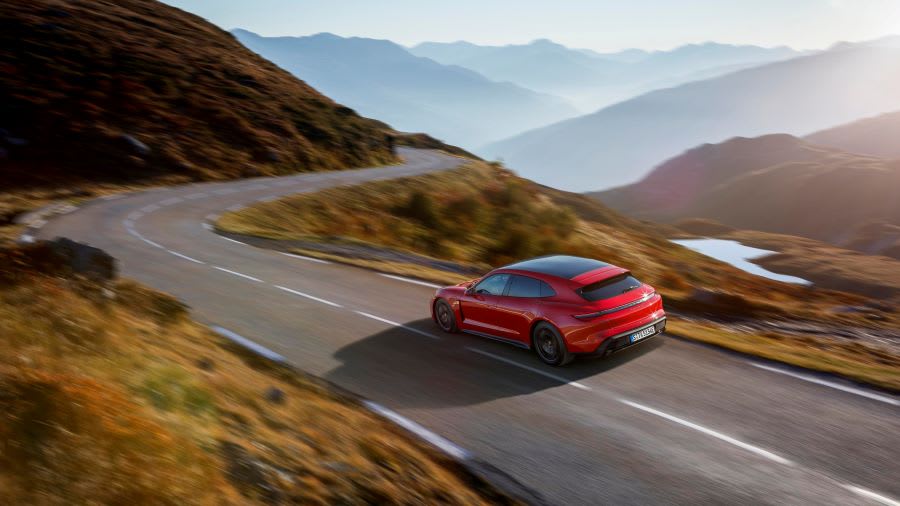
Running Costs
Despite being a sporty estate car offering supercar performance levels, running costs for the Taycan Sport Turismo are lower than you might expect. Of course, some of that is down to the pure-electric drivetrain, which eliminates much of the maintenance required on a petrol-powered model and allows access to cheaper energy — even with the high electricity prices we have at the moment.
The GTS gets an 83.7kWh battery pack which would cost around £30 to charge from empty at home. For that, you get a promised 301-mile range, although we were getting closer to 250. Play hard, and you’ll lose much more than that, as will running in freezing temperatures. That works out at the financial equivalent of roughly 50mpg, which isn’t bad for a car that can hit 62mph in 3.7 seconds.
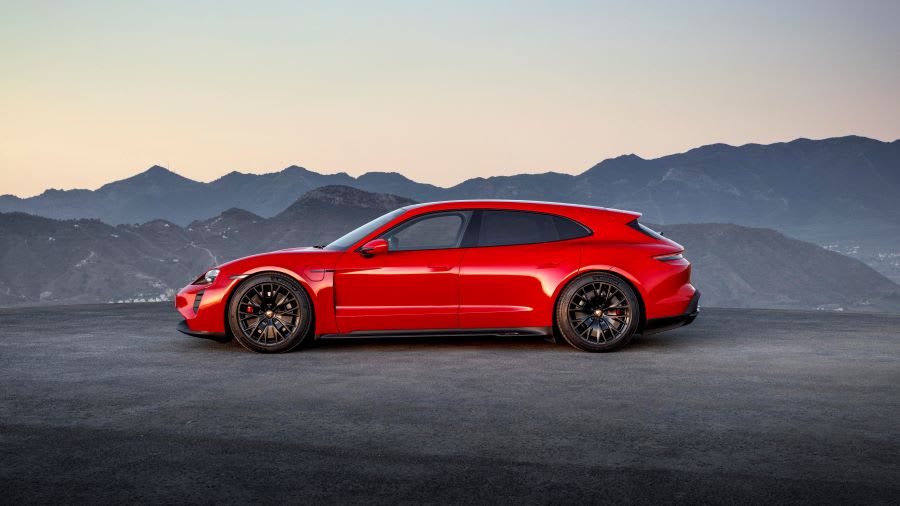
Charge at a superfast charger on the motorway, and you’ll come off far worse. At up to 70p per kWh, charging from 5% to 80% — which takes just over 20 minutes at a 270kW — will cost £44, which, converting to the cost of petrol instead, means we were getting the equivalent of around 29mpg. Far worse, but still as good as you’ll get from any of its oil-burning rivals.
Car tax is set at zero as it is for all electric cars — for now. Company car drivers will also face a BIK rate of just 2%, or around £840 a year for taxpayers on a 40% rate.
Dealer visits should be rare, with the Taycan needing a service once every two years or 20,000 miles. Porsche covers the car with a three-year warranty, with the battery pack extended to eight years.
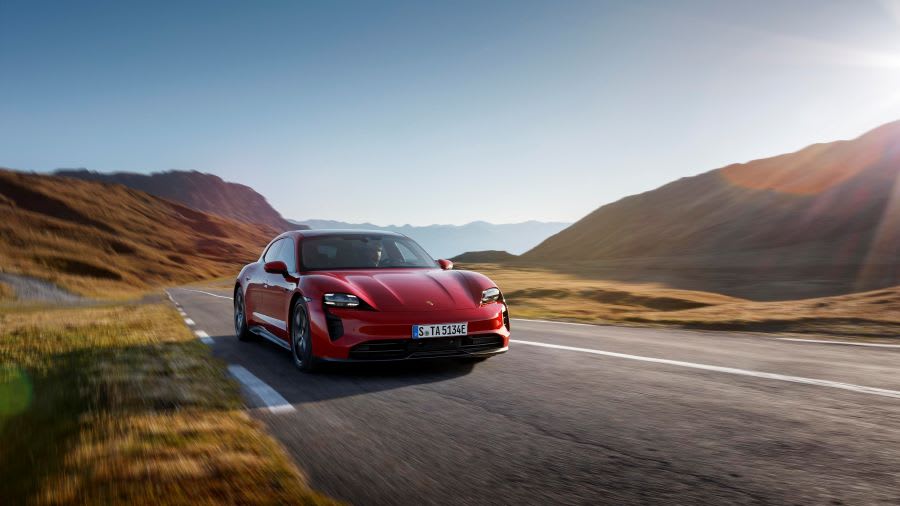
Interior
Forget analogue Porsches of the past — the Taycan Sport Turismo is a digital delight. In front of the driver sits a 16.8-inch digital instrument panel, with not one but two touchscreens set alongside in the centre stack. Go crazy with the options, and you can even have a fourth screen for the passengers' use, but that’s probably overkill.
Even three screens might sound a bit much, but it all works well. Mostly. The driver’s instrument panel might be huge, but it’s crisp and clear, with an easy system to change what’s displayed in front of you, although the steering wheel obscures the area near the edge.
The infotainment screen is similarly impressive, with an easy-to-use interface. It’s offset from the centre of the car, which creates a slightly odd aesthetic, but it’s otherwise conventional. Underneath that sits another screen that will mainly operate the climate control. It’s got impressive haptic feedback, but it’s still too easy to hit the wrong part of the screen and is low down, making it difficult to glance at while driving.
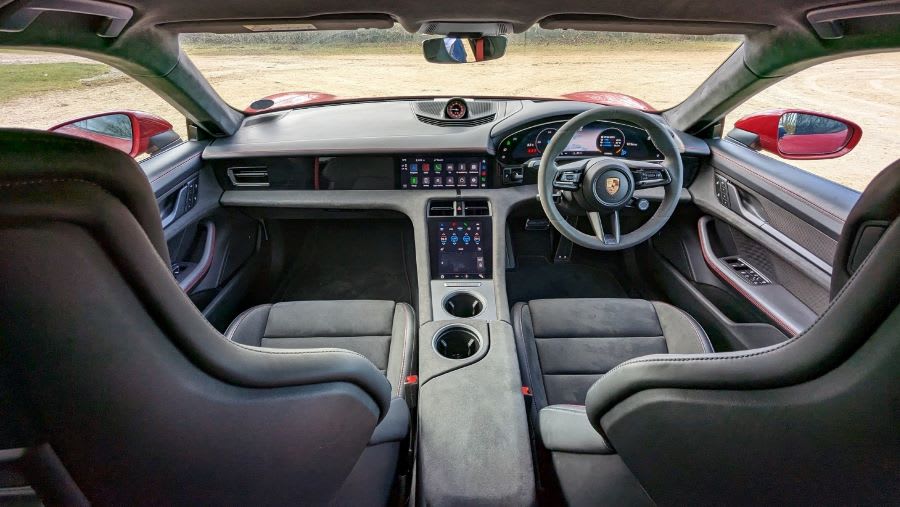
The driver gets the best of the cabin, with gloriously comfortable and supportive sports seats covered in Porsche’s Race-tex fabric (it’s Alcantara in all but brand name), positioned absolutely perfectly behind a three-spoke steering wheel. With a pedal box sited centrally, it’s as perfect a driving position as I’ve yet found.
Those in the rear get a fair deal, but as you would expect, it’s rather more bijou than the front. Still, the pair of seats are comfortable and, again, supportive, with their own climate controls for the rear of the cabin. It’s a strict four-seater, apart from when it isn’t; our test car had the optional 4+1 seating, so the centre of the rear bench is converted to accommodate a third passenger. It doesn’t, though, unless that third rear passenger will be somebody you really don’t like.
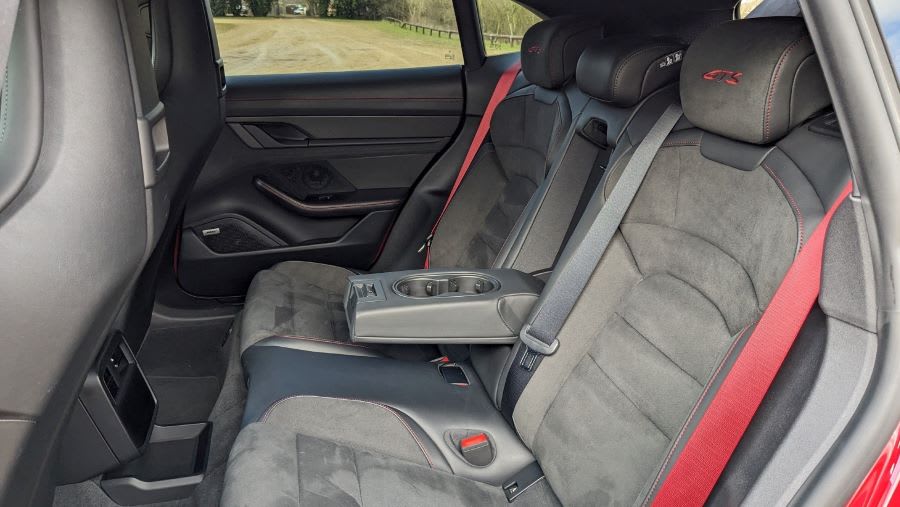
The Sport Turismo boot is slightly more practical than the regular Taycans, but it’s not exactly cavernous. There are 446 litres of cargo space there — about the same as you’ll find in the back of a Renault Megane — but it does extend to 1,200 litres when you fold the seats down and pack it to the roof. An extra 84-litre cargo area sits under the bonnet, which is a handy place to keep the charging cables.
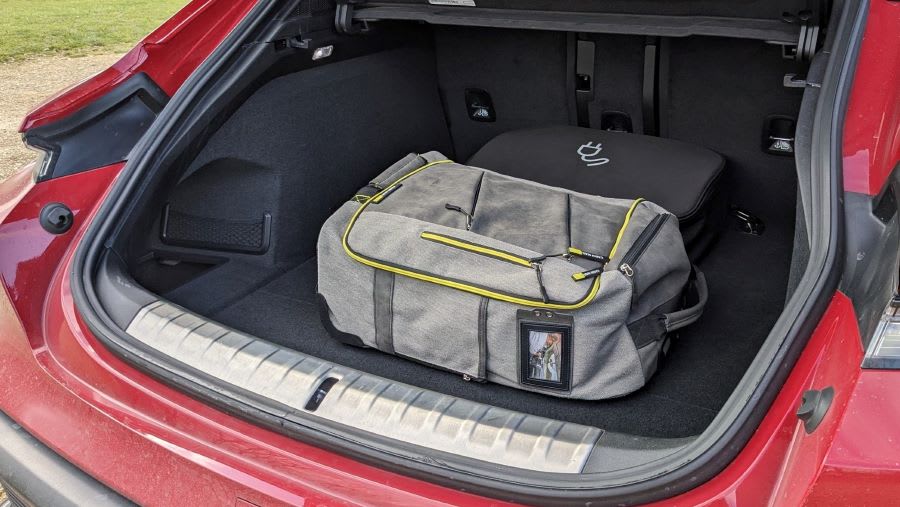
Safety
The safety experts at Euro NCAP put the Porsche Taycan to the test in 2019, awarding it the maximum five-star rating. Crash safety was good, with competitive scores in each area.
It’s unsurprising, though, as Porsche loads the Taycan with safety technology. Fitted as standard are curtain airbags all around, knee airbags for the front passengers (on top of the usual airbags and side airbags), automatic emergency braking with both pedestrian and cyclist recognition, adaptive cruise control, lane keeping assist, traffic sign recognition, and even an active pop-up bonnet to reduce the risk of injury to pedestrians.
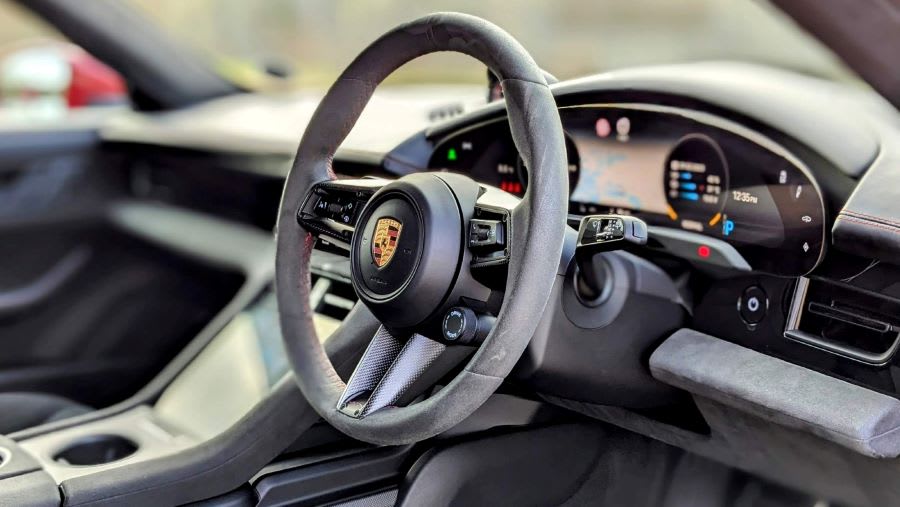
Options
Despite spending a six-figure sum on a car — or four figures a month — it’s surprising just how many items you might consider to be typical equipment for a modern car are relegated to the options list.
Some grate, such as the adaptive cruise control at £1,238 or blind spot monitoring at £548, which really should be on a car of this nature. We’d also add the head-up display (£1,128) and 360-degree cameras (£522) for parking — it’s a big car!
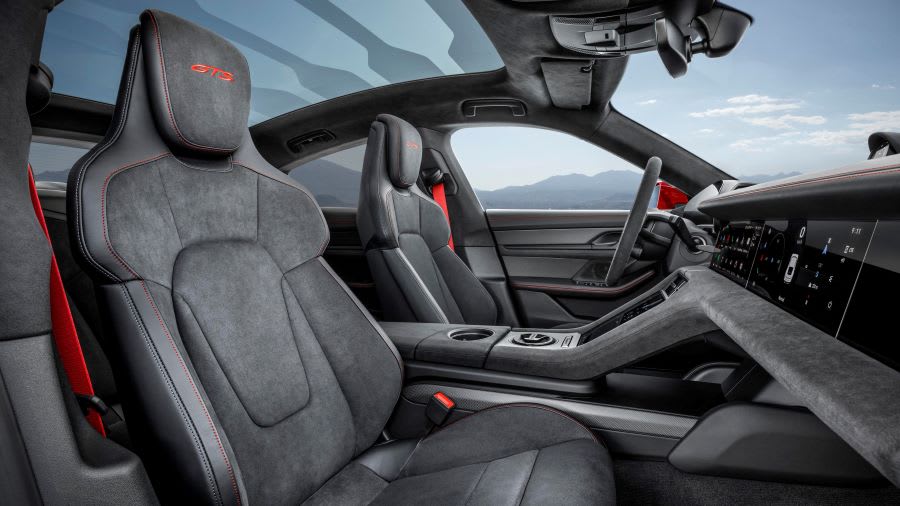
Elsewhere, there’s a list of options so long it’s almost tiring to work through. Our test car, for example, had an extra £13,703 of options bolted on, from lustrous Carmine Red paint (1,683) and GTS Interior package (which looks like some contrast stitching and seat belts, along with plusher seat trim and embroidered GTS logo for £2,820) to a Bose sound system (£956) and tyre repair kit (£42). Add ceramic brakes, carbon wheels, electronic chassis control and rear axle steering, and you’ll add close to £15,000 to the total.
How much is enough? Your wallet may give up before you do.
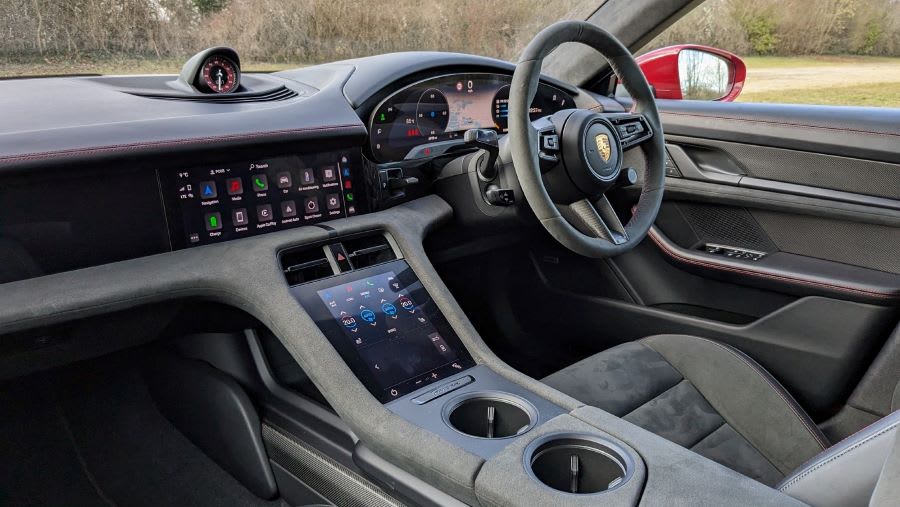
Rival Cars
They don’t like to mention it, but the Porsche Taycan and Audi E-Tron GT (below) are remarkably similar under the skin. Both are loaded with technology, offer incredible performance, and are surprisingly comfortable. But would you rather have an Audi or a Porsche for broadly similar money?
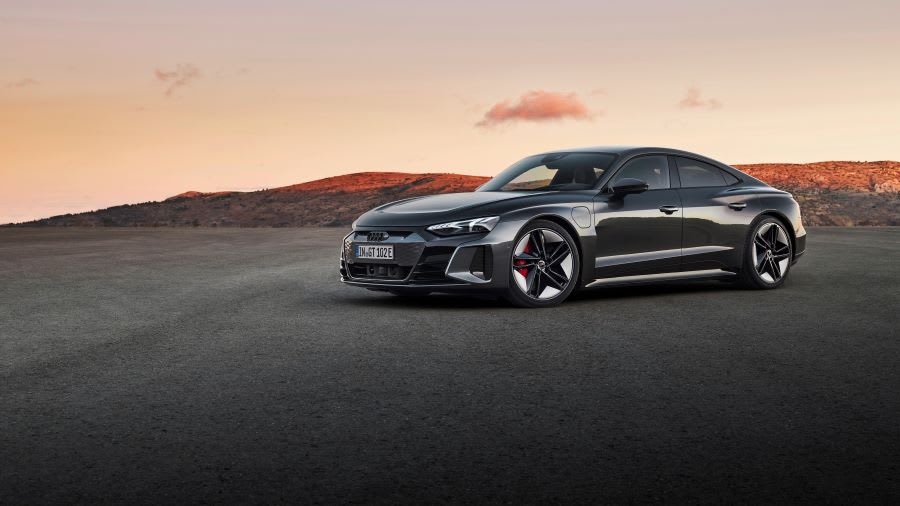
The BMW iX is a proper SUV, and it’s impressive to drive — despite the size and weight, it’ll tackle most roads with gusto and without affecting comfort too much. It’s even quite a good-looking machine in the metal, with striking proportions. It’s not as practical as other SUVs, though, and can’t match the performance of the Porsche.
Tesla’s Model S (below) has been around for a decade, although it has seen constant evolution in that time. Still, it looks dated when parked next to the Porsche, and the quality difference is evident when you step inside. However, it is more spacious with more room than you’ll know what to do with.
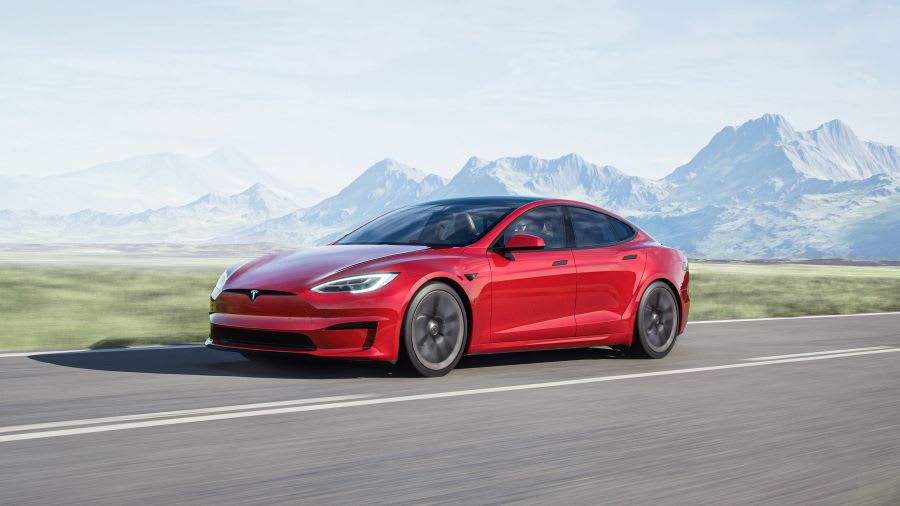
Verdict
Who would have thought that an estate version of a sports saloon offering supercar performance would be the best electric car in the UK? We certainly didn’t, but then the regular Taycan is such a capable and pleasing car that offers a more practical version that doesn’t compromise on its abilities would only ever be a good thing.
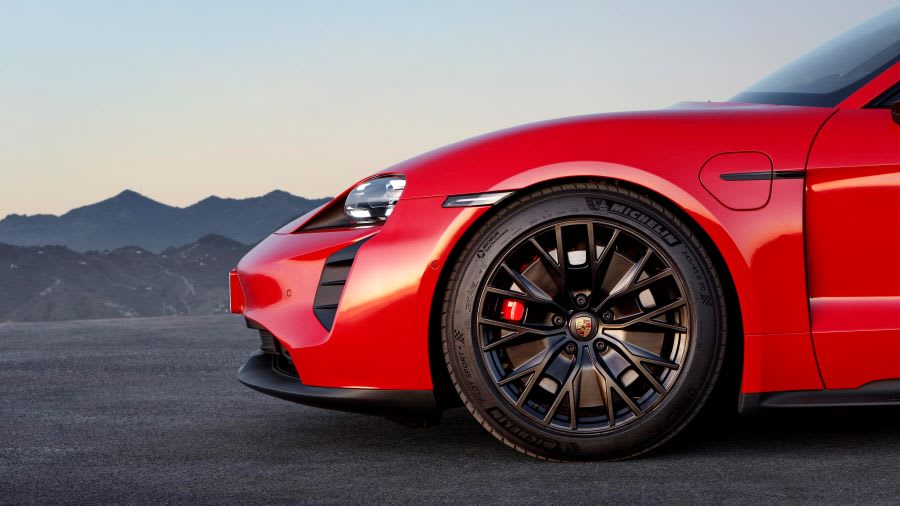
You might think that the six-figure price tag is off-putting. Still, it’s cheaper than an Audi RS6 Avant Performance and a Mercerdes-Benz E 63 S estate and offers more exclusivity and — amazingly — lower running costs.
It neatly sidesteps the trend towards SUVs, too, leading to a finer driving and handling car that doesn’t suffer from loss of efficiency thanks to hauling a load of extra heavy metal around.
As you would expect from a Porsche, it’s got prodigious performance, (mostly) glorious handling and can waft along in surprising comfort. It’s a brilliant all-rounder and, arguably, the finest EV on sale right now.
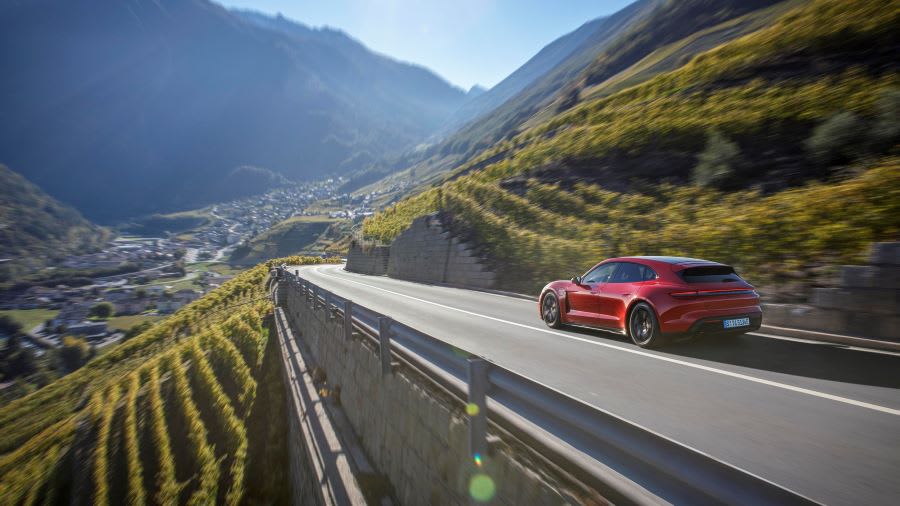
Where to next?
View our latest Porsche Taycan lease deals - from just £933 per month inc VAT**
Looking for a great leasing deal? Check out our incredible range of Special Offers
New Electric coupe? Read our latest Car Reviews and find the right model for you
Want to know more about leasing? Take a look at our comprehensive Leasing Guides
Interested in everything motoring? Why not catch up on all the latest Car Leasing News.
*Score based on Select’s unique meta score analysis, taking into account the UK’s top five leading independent car website reviews of the Porsche Taycan Sport Turismo GTS.
**Correct as of 10/03/2023. Based on 9 months initial payment, 5,000 miles over a 48 month lease. Initial payment equivalent to 9 monthly payments or £8,397.99. Ts and Cs apply. Credit is subject to status.



















